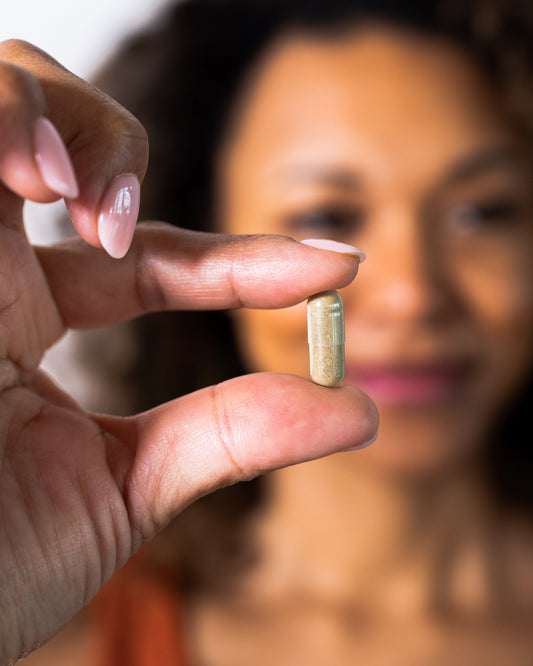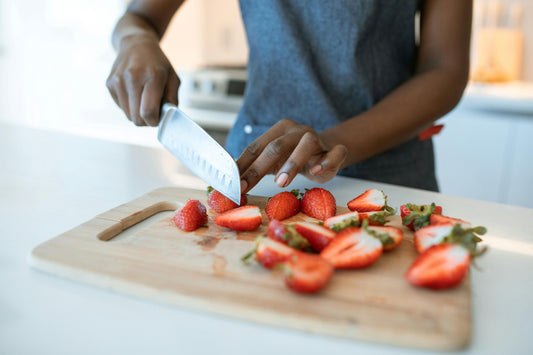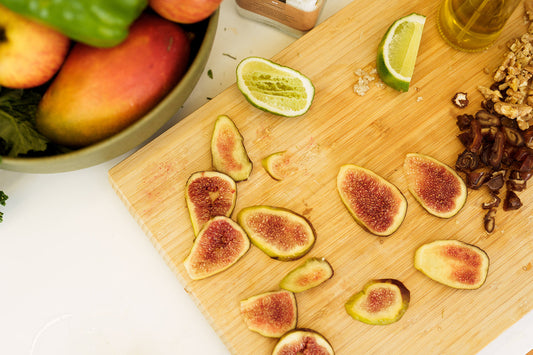Waste not, want not! Composting is a natural process that’s been practiced for thousands of years – it replicates the nutrient-recycling performed by Mother Nature and her team of bacteria, worms, fungi, and flies!
Made from decaying organic matter and beneficial microorganisms, compost makes your favorite alkaline foods tastier and more nutritious. It all starts with soil quality, which is critical for growing the most nutrient-dense produce. After all, dead soil creates weak plants that can’t sustain you.
Learn how to get started with home composting to produce densely nourishing soil for your own alkaline garden (you can even create a mini-compost for a window box!).
Benefits of Composting
Composting is a simple way to add nutrients to your lawn or garden, fuel plant growth, and restore vitality to depleted soil. Providing plants with extra sustenance in the form of organic natural compost is vital for growing healthy and nutritionally dense crops.
There are plenty of great reasons to compost:
- Makes food taste better (enhances flavonoid content)
- Enhances the nutritional value of food (nutrients build nutrients)
- Enhances soil’s organic content, drainage, and fertility
- Eliminates the need for chemical fertilizers, providing real nutrition instead
- Naturally balances the ecosystem (no need for fungicides)
- Improves soil’s ability to anchor plants, increasing their resilience
- Reduces food waste going to landfill (30 to 40% of food is wasted)
- Completes the cycle of returning organic elements to the earth
- Provides food and accommodation for beneficial organisms
- Compost holds 20 times its weight in water, so you use less water
- Fertile composted soil accumulates water contributing to springs and lakes
- Compost serves as a natural filter for contaminants and balances pH
How to Start Composting
Mother Nature designed a process to take your trash and convert it into gold! Take advantage of this magnificent dynamic and feed your plants with the earthly nutrition of homemade compost.
- Start your compost pile on bare earth. This allows worms and other beneficial organisms to aerate the compost and be transported to your garden beds.
- Lay twigs or straw first, a few inches deep. This aids drainage and helps aerate the pile.
- Add compost materials in layers, alternating moist and dry. Moist ingredients are food scraps, tea bags, seaweed, etc. Dry materials are straw, leaves, sawdust pellets, and wood ashes. If you have wood ashes, sprinkle in thin layers, or they will clump together and be slow to break down.
- Keep compost moist. Water occasionally, or let the rain do the job.
- Cover with anything you have — wood, plastic sheeting, carpet scraps. Covering helps retain moisture and heat, two essentials for compost.
- Every few weeks give the pile a quick turn with a pitchfork or shovel. This aerates the pile. Oxygen is required for the process to work, and turning "adds" oxygen. You can skip this step if you have a ready supply of coarse material like straw.
- Once you've established your compost pile, add new materials by mixing them in, rather than by adding them in layers. Mixing, or turning, the compost pile is key to aerating the composting materials and speeding the process to completion.
Types of Composting
There are a few different approaches to composting depending on your budget, climate, and the amount of effort you want to put in. There are many composting options, from creative DIY solutions to sophisticated commercial systems. Choose what works for you.
Aerobic Composting
- Uses air to help break down the organic materials in the soil
- Needs to be turned over every 2 to 3 days (some systems make this easy with a handle to turn!)
- Add green, nitrogen-rich matter, like leaves and grass clippings, to increase temperature and promote the breakdown into beautiful dark soil
- Water the compost regularly to speed up the process
- The smell can get pretty bad if the compost isn’t turned (air needs to get in to stop the rotting)
Anaerobic Composting
- Simply throw your compost ingredients onto a pile and allow it to do its thing — which it will eventually
- Beware: anaerobic compost usually smells pretty strongly
Vermicomposting
- This compost uses worms to break down the elements faster
- You can buy composting worms specifically for the job; red worms are some of the most productive soil workers
- Worms prefer alkaline foods
- Vermicomposts don’t need to be turned — the worms do that for you
- The smell is more pleasant than the other types of compost (those clever little worms)
Tips for Starting Your Compost
Composting is easy to do and you can start straight away. Don’t get overwhelmed by the process, just take it step by step and simply start collecting items to compost. Here are some considerations for getting ready to compost your kitchen waste.
- Immediate: Have a small sealable container in your kitchen for collecting food scraps. Empty it daily into a larger compost bin outside (this prevents indoor fruit flies – those little annoying ones that want to fly in your eyes and nose!)
- Efficient: Situate your compost near your kitchen, so you can quickly add food scraps to it, but be aware it can smell slightly when it gets hot. Put it near your garden beds for easy access.
- Shade: Compost retains more moisture when left in the shade — the microorganisms living inside the compost prefer it dark and damp.
- Upcycle: Cardboard boxes and paper can contribute a lot to compost (you can add anything that used to be a plant, like paper) but avoid adding too much ink and eliminate plastic completely (e.g. take out the plastic windows from envelopes).
- Diversify: The decomposition of different elements supports different microorganisms – increasing diversity enhances the richness of your compost. Avoid having just kitchen scraps and ensure you have drier, ‘browner’ plant matter.
- Distribute: Use as much compost on as many different plants as you can. Mix into the soil, put around the base of trees, top-up beds, and spread around your plants.
What Can I Put in Compost?
Build compost from these materials:
- Alkaline food scraps
- Cardboard
- Cotton fabric
- Food scraps
- Grass clippings
- Hay or straw
- Leaves (green and brown)
- Organic animal manure (from herbivores)
- Mulch
- Paper
- Pine needles
- Seaweed
- Shredded branches
- Tea bags
- Urine (adds nitrogen to your compost)
- Weeds (but not brambles or invasive vines)
- Wood shavings or sawdust (from real wood, not treated wood)
What Should I Avoid?
Don’t put these things in your compost:
- Cat, dog, or human excrement
- Chemical fertilizer
- Coal ash
- Diapers
- Excessive citrus fruit (acidity kills microorganisms)
- Fats and grease
- Glass
- Glossy paper/photo paper
- Meat and bones (they attract rats)
- Onion or garlic (also kills microorganisms)
- Toxic or diseased plants
- Wrapping paper
The next time you cut, chop, or peel, ask yourself: Where’s it going next? Creating your own compost or a community compost heap increases nutrition so you can enjoy more vitalizing alkaline foods. Nourishing your plants with compost gives the nutrients back to you!



















































1 comment
What are good material used to compost